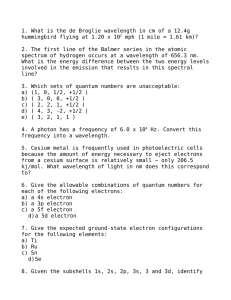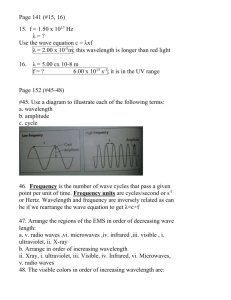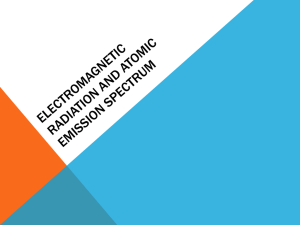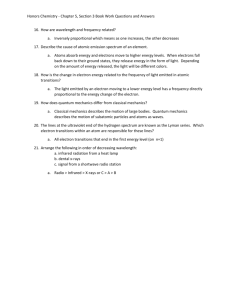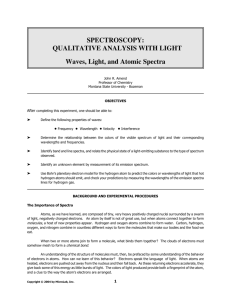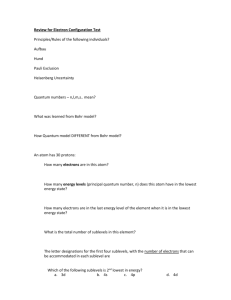Notes for Test 2
advertisement
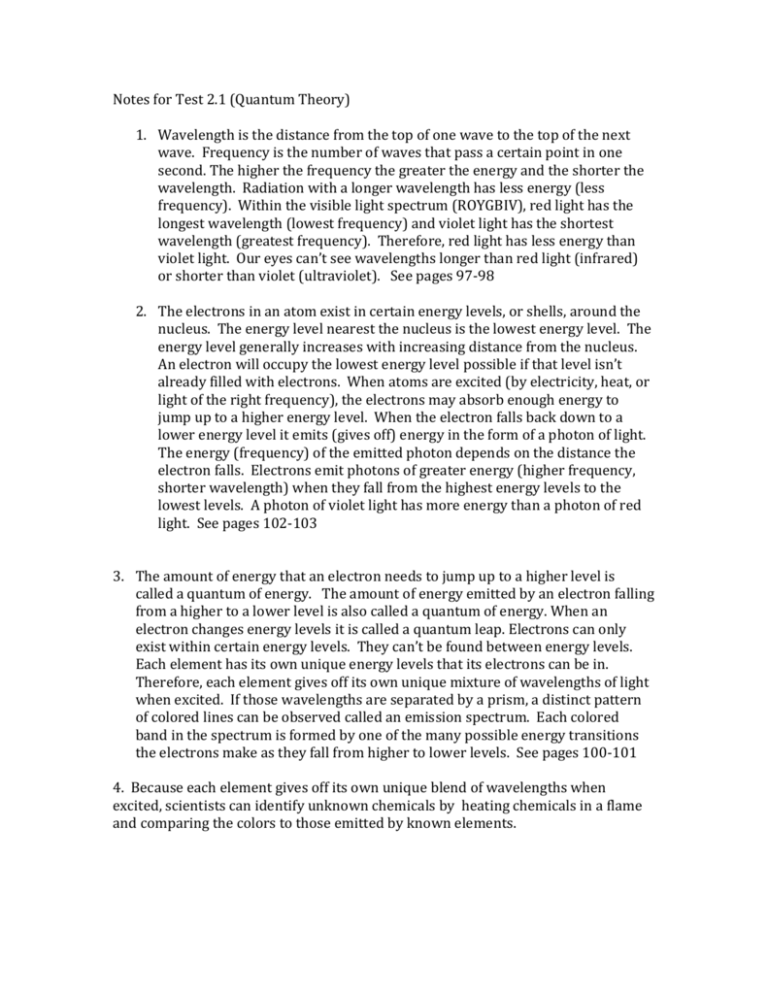
Notes for Test 2.1 (Quantum Theory) 1. Wavelength is the distance from the top of one wave to the top of the next wave. Frequency is the number of waves that pass a certain point in one second. The higher the frequency the greater the energy and the shorter the wavelength. Radiation with a longer wavelength has less energy (less frequency). Within the visible light spectrum (ROYGBIV), red light has the longest wavelength (lowest frequency) and violet light has the shortest wavelength (greatest frequency). Therefore, red light has less energy than violet light. Our eyes can’t see wavelengths longer than red light (infrared) or shorter than violet (ultraviolet). See pages 97-98 2. The electrons in an atom exist in certain energy levels, or shells, around the nucleus. The energy level nearest the nucleus is the lowest energy level. The energy level generally increases with increasing distance from the nucleus. An electron will occupy the lowest energy level possible if that level isn’t already filled with electrons. When atoms are excited (by electricity, heat, or light of the right frequency), the electrons may absorb enough energy to jump up to a higher energy level. When the electron falls back down to a lower energy level it emits (gives off) energy in the form of a photon of light. The energy (frequency) of the emitted photon depends on the distance the electron falls. Electrons emit photons of greater energy (higher frequency, shorter wavelength) when they fall from the highest energy levels to the lowest levels. A photon of violet light has more energy than a photon of red light. See pages 102-103 3. The amount of energy that an electron needs to jump up to a higher level is called a quantum of energy. The amount of energy emitted by an electron falling from a higher to a lower level is also called a quantum of energy. When an electron changes energy levels it is called a quantum leap. Electrons can only exist within certain energy levels. They can’t be found between energy levels. Each element has its own unique energy levels that its electrons can be in. Therefore, each element gives off its own unique mixture of wavelengths of light when excited. If those wavelengths are separated by a prism, a distinct pattern of colored lines can be observed called an emission spectrum. Each colored band in the spectrum is formed by one of the many possible energy transitions the electrons make as they fall from higher to lower levels. See pages 100-101 4. Because each element gives off its own unique blend of wavelengths when excited, scientists can identify unknown chemicals by heating chemicals in a flame and comparing the colors to those emitted by known elements.

